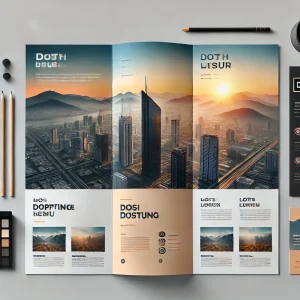
Designing an Engaging eBook Layout in Adobe InDesign
Read Time:1 Minute, 21 Second
Creating an eBook requires a combination of aesthetic design and functional interactivity. Adobe InDesign provides tools to craft professional eBooks that captivate readers. Here’s a guide to designing one:
Step 1: Set Up Your Document
- Open InDesign and create a new document.
- Select a page size suitable for digital devices, such as 1080 x 1920 pixels.
- Enable interactive features for ePub output if needed.
Step 2: Create a Cover Page
- Design an attractive cover with bold typography and a high-quality image.
- Use layers to organize text, graphics, and backgrounds.
Step 3: Add an Interactive Table of Contents
- Use the Table of Contents Tool to link chapter titles to their respective pages.
- Style the TOC with clean fonts and organized spacing.
Step 4: Structure Content with Grids
- Divide the page into grids for consistent placement of text and images.
- Maintain sufficient white space to avoid clutter.
Step 5: Incorporate Visuals and Graphics
- Add diagrams, charts, or illustrations to support the content.
- Use File > Place to insert high-resolution images.
Step 6: Style the Text
- Choose legible fonts for body text and headers.
- Apply Paragraph Styles to maintain consistency throughout the eBook.
Step 7: Add Interactive Elements
- Include hyperlinks, buttons, or multimedia elements like videos.
- Test interactivity using the Preview Panel.
Step 8: Finalize and Export
- Review all pages for alignment, readability, and functionality.
- Export the eBook as an interactive PDF or ePub file.
Conclusion:
A professionally designed eBook in Adobe InDesign combines aesthetic appeal with functional features, making it engaging and easy to navigate. By focusing on layout, visuals, and interactivity, you can create an eBook that stands out.


Average Rating